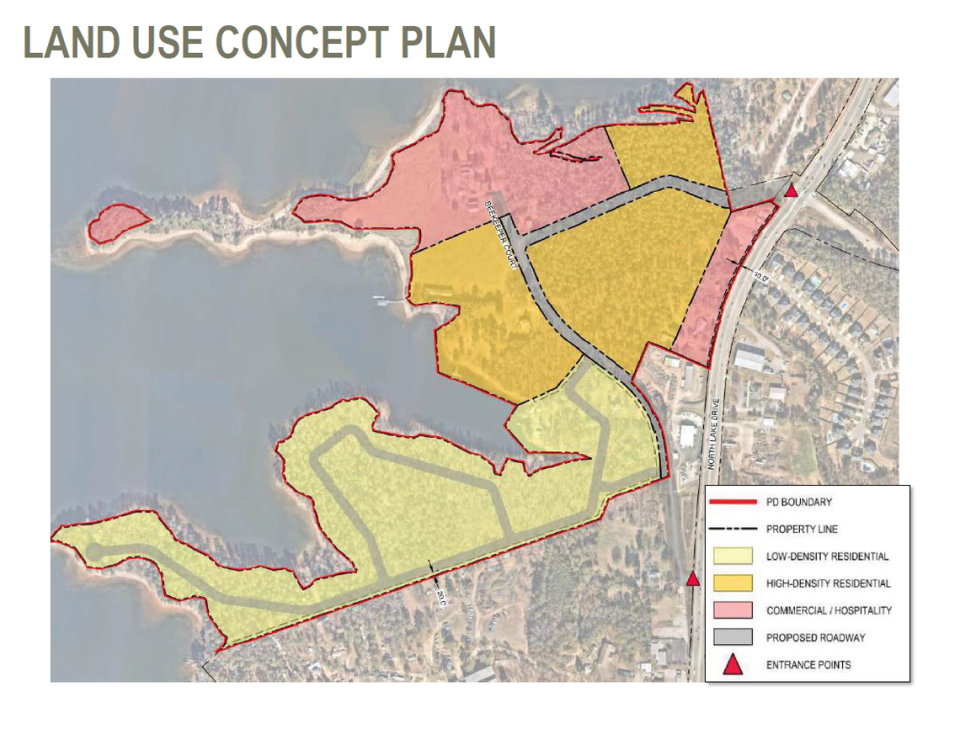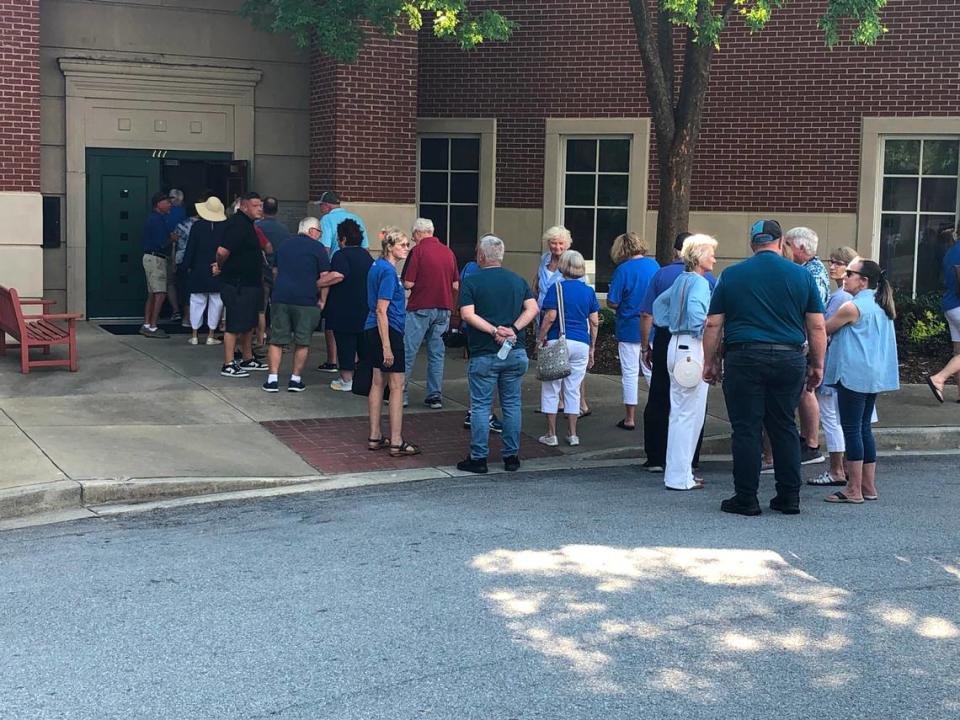Multimillion-dollar Lake Murray housing plan slows as Lexington residents balk at growth
Town leaders say a multimillion-dollar development on Lake Murray could make a great addition to Lexington. But for many people who attended a town hall meeting on Wednesday, adding hundreds of homes to the area would not be welcomed.
A crowd, many dressed in matching blue shirts, lined up out the door and into the parking lot before a joint meeting of Lexington Town Council and Lexington County Council to discuss the Smallwood Cove development. Inside the meeting room at town hall, many lined the walls after all the chairs were filled. Many people moved to an overflow room when the fire marshal decided the meeting had reached capacity, Mayor Steve MacDougall announced before the meeting got underway.
Project opponents got welcome news. Interim Town Administrator Stewart Ford said the initial proposal submitted to the town in May was “summarily rejected” for an inadequate traffic study, so there’s currently not a specific plan for planners to review.
“The study that had been submitted was insufficient, and maybe a little biased, if I can say,” MacDougall told the crowd. He said the town was now working with a firm in Charleston on a new traffic study so that an “outside set of eyes” can look at it.
The 93.5-acre development will hug the coast of Lake Murray along North Lake Drive, above Jake’s Landing and below the Lake Murray Public Park and Dreher Shoals Dam.

Part of the development will be a 50,000-square-foot conference center long planned by the town of Lexington. Lexington officials secured a $1 million state budget proviso last year to help pay for the new Lake Murray conference center, which would provide the town with a venue for both in-town businesses and events as well as attract visitors to the lake. The center could also become a competitor to the Columbia Metropolitan Convention Center on Lincoln Street in the state capital, which is partly owned by Lexington County.
The 5-acre conference site will be donated to the town as part of an expected $733 million investment into the new development, according to a news release issued by Lexington in May. The town estimates that $6 million in state dollars have been committed in the last couple of years to building the conference center, with an expected opening date in 2028.
The new lakeside development will also include both single family and multi-family/townhome-style developments, as well as space for retail, restaurants, a hotel and a lakeside marina, to be built by a private developer.
About 40 acres would be used for low-density housing, with a minimum lot size of 4,000 square feet, and more than 30 acres for higher-density housing development, with under 20 acres for commercial and hospitality uses. The final plan would include 160 units of single-family homes and 940 townhome units. The hotel would have 290 rooms, 40,000 square feet of retail space and 10,000 square feet of restaurant space.
County council members at Wednesday’s meeting were concerned that any traffic study look at the impact well beyond the town limits.
“If people are traveling there from outside, they will come from the interstate, so other roads outside of Lexington proper will be used to get into it,” said Council Chairwoman Beth Carrigg.
County Councilman Darrell Hudson said a comprehensive study would be key to understanding what kind of impact the project would have. He recommended the study take into consideration traffic during school dropoff and let-out times and other peak travel times. He also wants the Lexington 1 school district brought into the conversation, “because we don’t control where they put the next school,” Hudson said.
The future site of the Smallwood Cove development is currently outside the town limits and subject to the county’s Lake Murray overlay district that’s designed to limit residential development around the lake. Some in the crowd Wednesday said they were concerned about how the cove could develop if it is added to the town’s jurisdiction and, therefore, no longer subject to the overlay district restrictions.
But Town Councilman Gavin Smith noted that even under the overlay district, the property owner could develop up to 180 homes on the site.
Hudson also questioned if the property could even be annexed to the town, as state law requires all areas inside the town limits to be contiguous and the planned development site does not currently border the town. Ford said his “lay understanding” was that annexation can cross over a body of water. Smallwood Cove is located across the lake from the town’s portion of the coastline.
“We’ve done several annexations, so we’re very mindful of the legal process,” Ford said.

County Councilman Scott Whetstone said he thought that would be a “broad swing,” comparing it to a town trying to cross Charleston Harbor to annex the next island visible on the horizon.
Carrigg said the neighbors of the Smallwood Cove property could also move to challenge an annexation if they oppose the move.
The project will be reviewed by the town planning commission before the town council takes another vote on the proposal, potentially with some major changes, Ford said. Many council members said they would expect the proposal to go back to first reading at that point.
Town Councilman Ron Williams said the town may also conduct a feasibility study on the location of its conference center as well.
State Rep. Chris Wooten, R-Lexington, said spoke at the meeting that if the center ultimately isn’t built, the town would lose approximately $6 million in state funds appropriated for that purpose.
Twenty speakers lined up to address the two councils, all but one of them opposing the proposal. Many feared so many new homes would worsen the area’s traffic woes and further strain public services like schools, roads and emergency responders.
Those concerns led Lexington County Council in 2021 to put a moratorium on new subdivision development so the county could tighten its zoning requirements, including the addition of the Lake Murray overlay.
John Campbell of Chapin told council members the development as submitted “violates every requirement in the county, and even violates the requirements of the city.”
Cheryl Huntley, who lives on the other side of North Lake Drive from the proposed development, said the area was “changing so much you don’t recognize it.”
“Soon it’s going to be like Harbison and other places,” she said, referring to the commercial stretch that includes Columbiana Centre. “You’re going to be scared to go anywhere. The police and EMS won’t be able to handle it.”
But town officials said such a well-positioned piece of property will be developed eventually, and Lexington wants to ensure it is developed in the most beneficial way for the town and other lakeside communities.
“This is the rarest piece of property on the lake, and we’ve got one chance to do this,” Smith said. “We have to get this right.”

